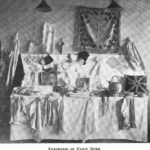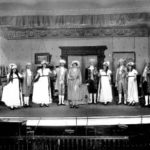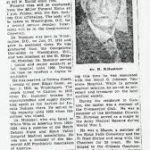
Occupational Therapy, Toy Making in WWI-Era Psychiatric Hospital, courtesy Otis Historical Archives, National Museum of Health and Medicine
Dr. Harry Hummer, superintendent of the Canton Asylum for Insane Indians, was not inclined to an active, hands-on approach to helping his patients overcome mental illness. In addition to his own weakness in this area, he may have found it nearly impossible to apply his book knowledge to real-life situations at the asylum. His patients at St. Elizabeths in Washington, DC, had been mainly white males with a military background.
In South Dakota, his patients were from another race and culture which Hummer didn’t even attempt to understand. The problem is highlighted in a letter Hummer wrote to request reimbursement for an expenditure of $118.93 that he had incurred for returning patient Lillie Chaves to her home in New Mexico.
Dr. Hummer explained: “She was reported as having been restored to ‘her normal mental condition’ under date of April 14, 1914. This was not intended to imply, however, that she was competent to make the trip from Canton to Laguna, unattended. She was a young girl of about 18 years, who understood very few English words and spoke none.”
Hummer went on to explain that there were four changes of cars during the train trip, which would have been difficult for Chavez to negotiate without an English-speaking escort. He was perfectly correct, of course, but the explanation underscores an important reason that the Canton Asylum failed in its mission. How could a psychiatrist attempt to help a patient when neither person could speak the other’s language?
How could Hummer diagnose a person he couldn’t understand, and more importantly, how could he create a plan to help that person? Without interpreters available to the asylum, little could be done for non-English speakers except warehouse them. Chavez was fortunate in that her father was involved and had come up, himself, to get her.








Thank you for sharing this with your readers. The history of psychiatric care is fascinating, but often very sad.
Carla
Pingback: The History of “Modern Psychiatry” in the United States – Harmony Psychiatric, LLC